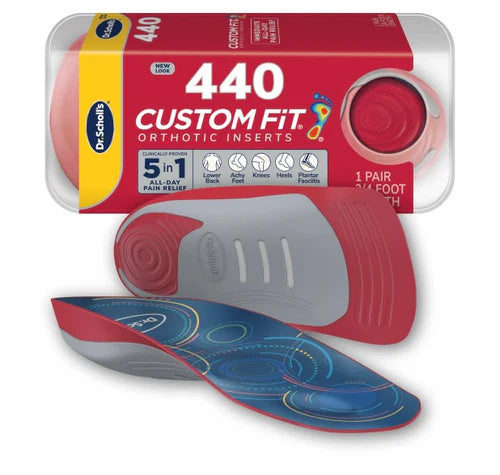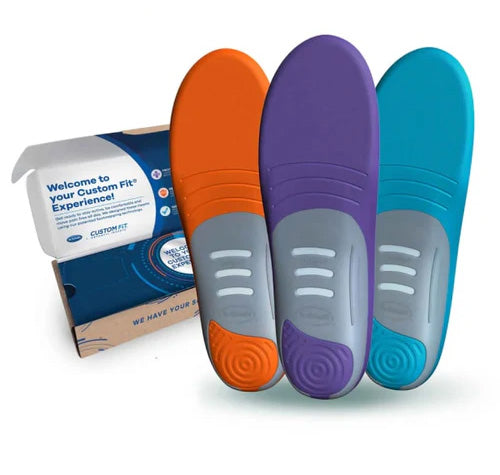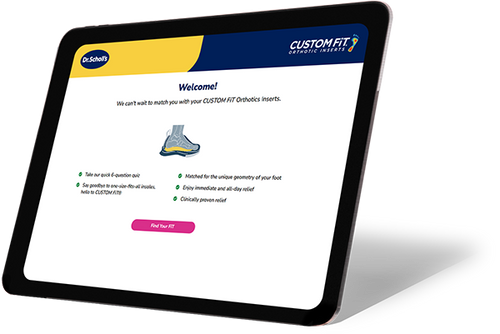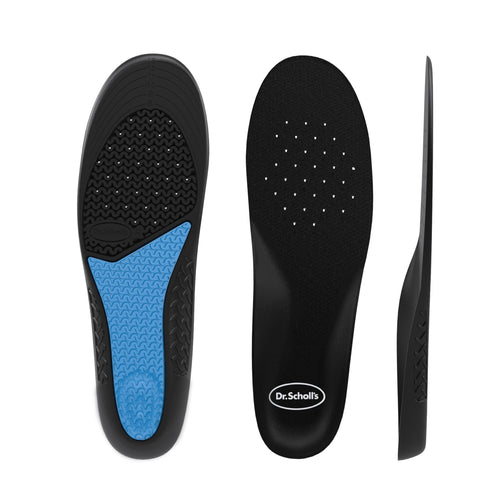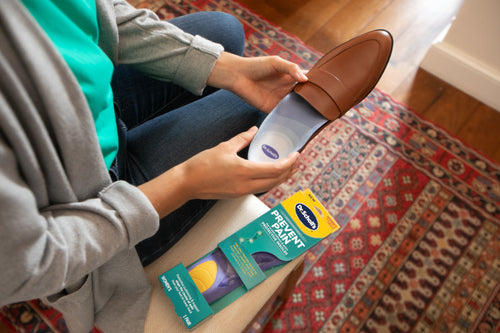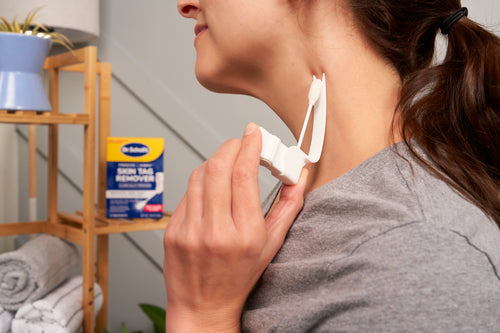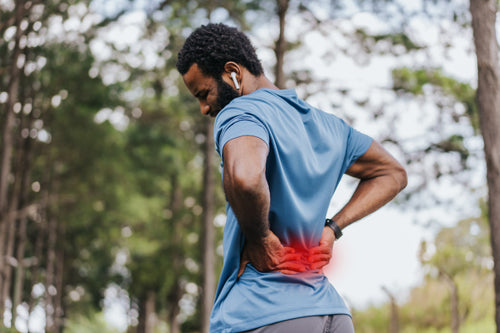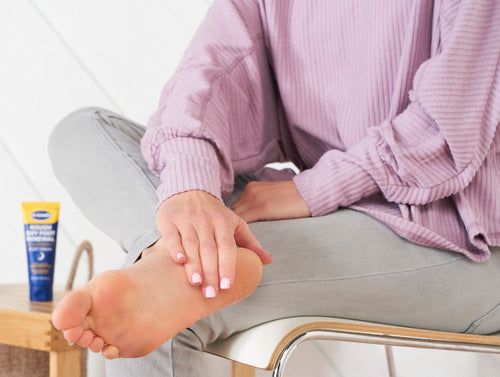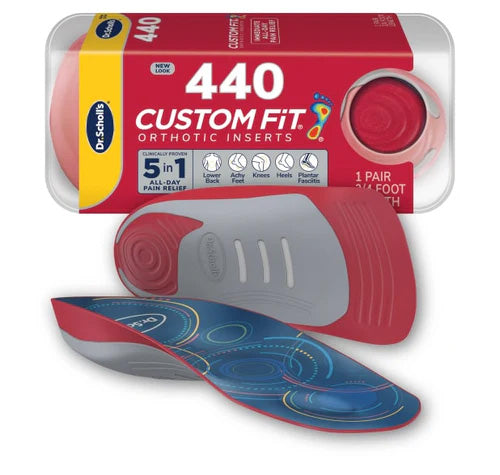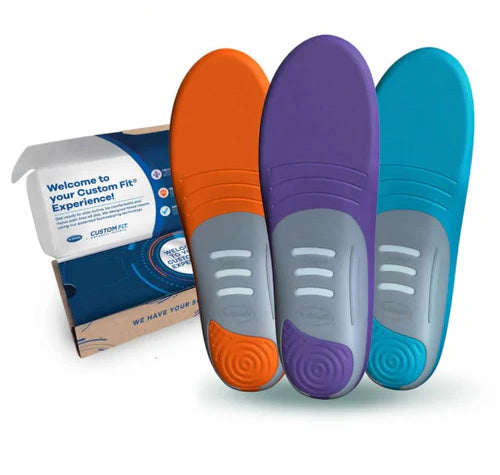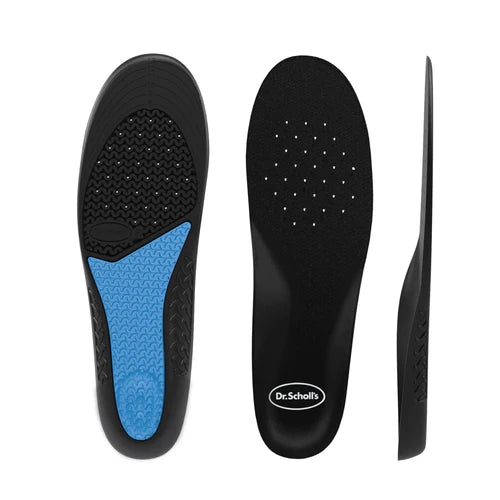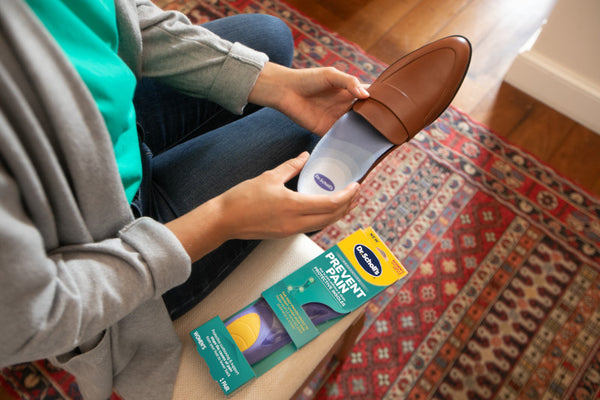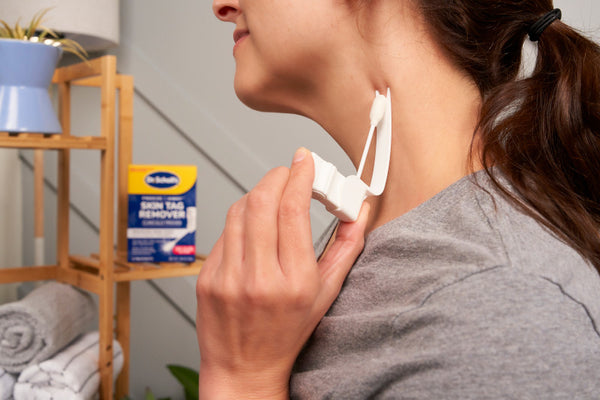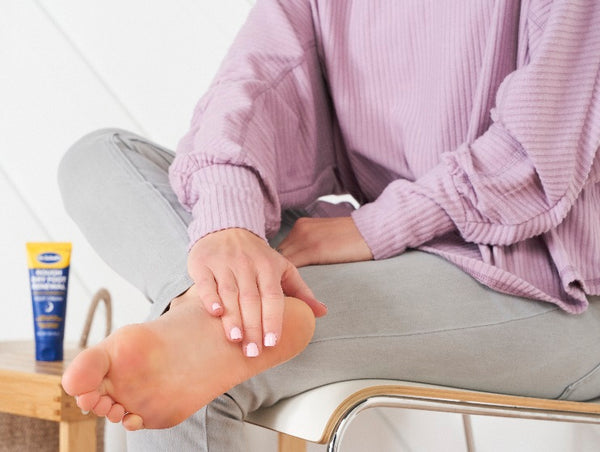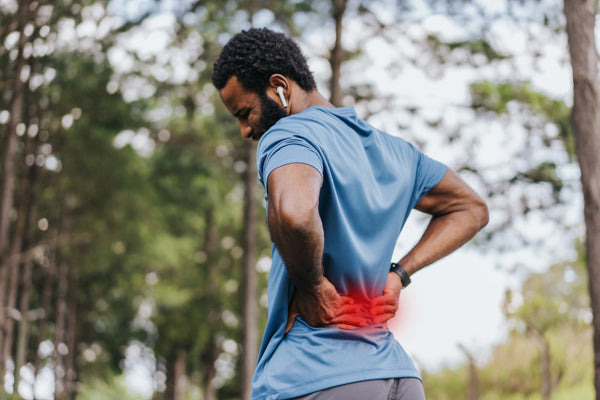Athlete’s foot, also called tinea pedis, is a common skin infection caused by fungal organisms that grow on the feet, typically between the toes. The foot fungus thrives in warm, moist environments and spreads through direct contact with an infected person or by touching surfaces contaminated with the fungus.
THE FACTS ON ATHLETE’S FOOT:
WHAT IS ATHLETE’S FOOT?
Signs and symptoms of athlete’s foot include a scaly rash that usually causes itchy feet, stinging and burning. Itching is often worst after taking off your shoes and socks. Some types of athlete’s foot produce blisters, bumps, or ulcers.
Other infections may cause chronic dryness and scaling that spread up the side and top of the foot. This can sometimes be mistaken for eczema or dry skin. The infection can affect one or both feet and can spread to your hands, particularly if you scratch the infected areas of your feet. If athlete’s foot spreads to your toenails, they can become thickened, discolored, and painful.
WHAT CAUSES ATHLETE’S FOOT?
Athlete’s foot is closely related to other fungal infections, such as ringworm and jock itch. It is contagious and can be spread on contaminated floors, towels or clothing. Athlete’s foot becomes more common with age.
Athlete’s foot fungi are commonly found in:
- Showers
- Locker room floors
- Around swimming pools.
- Damp socks and shoes from sweaty feet, and warm, humid conditions encourage the growth of the fungus on your feet that causes athlete’s foot.
Athlete’s foot can often be effectively treated and/or prevented with over-the-counter antifungal sprays and powders.
Prescription medications may be required, particularly if the infection hasn’t cleared after the specified period of self-treatment with over-the-counter products. If you have diabetes, and suspect you have athlete’s foot, you should see your doctor, especially if you notice signs of a bacterial infection, such as excessive redness, swelling, drainage or fever.
HOW TO HELP PREVENT ATHLETE’S FOOT
Steps you can take to help prevent athlete’s foot:
- Avoid wearing damp socks or tight-fitting shoes
- Wash your feet every day with soap and water, always dry thoroughly between your toes and leave your feet exposed to the open air to cool.
- Don’t share mats, rugs, bed linens, clothes or shoes with someone who has a fungal infection.
- Don’t walk barefoot in places where infection can spread. Wear shower shoes or sandals in public places such as locker rooms, swimming pools, community baths and showers.
- Rotate your shoes so that you don’t wear the same pair two days in a row. It also helps to wear open-toed shoes in warm weather to let your feet “breathe”.
- Change your socks often to keep your feet dry. If your feet sweat a lot, this may mean changing them a few times throughout the day.
- Wear socks made of fabric that wicks moisture away from your skin, like acrylic, wool, or polypropylene.
HOW TO TREAT ATHLETE’S FOOT?
Athlete’s foot treatment usually involves a combination of over-the-counter medications and good foot hygiene (see above).
Try over-the-counter topical antifungal treatments such as athlete’s foot sprays that absorb excess moisture and treat and prevent athlete’s foot.
If your athlete’s foot doesn’t respond to over-the-counter treatments, you may need to see your doctor for a prescription-strength treatment. These severe infections can require oral antifungal medications.
SHOP PRODUCTS FOR ATHLETE'S FOOT
EXPLORE MORE EXPERT ADVICE FROM DR.SCHOLL'S
Related Symptoms & Conditions
Related Articles
Tips to Keep our Feet and Shoes Smelling Fresh
6 tips to keep your feet and shoes smelling fresh.
How to Pamper Your Feet at Home
Tips to create a spa experience at home that not only takes care of your feet, but makes them feel fabulous:
Why It’s So Important to Take Care of Your Feet
Foot care, tips to keep your feet healthy and continue to be active for years to come.
Frequently Asked Questions
What is Athlete’s Foot
Athlete’s Foot is fungal infection that occurs primarily between the toes of the feet, but can also occur over the entire plantar surface of the foot. This is called Moccasin Athlete’s foot.
Athlete’s foot is contagious and can be transmitted directly by touching someone’s feet or indirectly through clothes, and in public areas that are damp or water laden such as pool areas.
How to get rid of athlete’s foot
It’s often possible to cure athlete’s foot at home with an over-the-counter anti-fungal treatment. Athlete’s foot treatments are available in cream, powder and spray form. It’s important to follow the instructions carefully and use the product consistently as directed for the full specified duration. You may also find powders that disinfect shoes from athlete’s foot fungus. In addition to using the anti-fungal treatment, it’s important practice good foot hygiene:
- Wash and dry your feet thoroughly every day. Pay special attention to the area between your toes.
- Change your socks every day and air out your shoes after wearing them. Avoid wearing the same shoes two days in a row.
- Air your feet out whenever you can. When it’s possible, go barefoot or wear shoes with open toes.
- Avoid going barefoot in public areas, especially locker rooms and pool areas.
In some cases, athlete’s foot persists despite over-the-counter treatment and good hygiene. In these cases, a doctor can prescribe stronger treatments to use for athlete’s foot such as prescription-strength anti-fungal topical remedies and oral anti-fungal medications.
What does athlete’s foot look like?
Visual symptoms of athlete’s foot will vary based on the type of athlete’s foot someone has. People often describe athlete’s foot feeling like the skin is itching, burning and stinging.
- Toe web – This type of athlete’s foot occurs between the toes and often starts between the pinky toe and the toe next to it. The skin is often red with a rash, producing a burning and itching sensation. There may also be scales and peeling.
- Moccasin – The moccasin type of athlete’s foot typically starts with slight soreness, irritation and itching on bottom of the foot. If the infection advances, the symptoms can become more pronounced with skin thickening, cracking and peeling. The rash can spread from the bottom of the foot to the sides of the foot and heel. In some cases, the infection can spread underneath the toenails. When this happens, the nails can become thick and begin to break apart.
- Vesicular – This type of athlete’s foot produces blisters which can appear anywhere on the foot, including between the toes and on the sole of the foot. The blistered areas may cause pain and itching.
Is athlete’s foot contagious?
Yes, athlete’s foot is contagious. Athlete’s foot is a fungal infection that can spread from one person to another through physical contact. Most commonly, it can spread through contaminated surfaces, especially in damp environments, such as locker room floors and the surfaces around swimming pools. In addition, contaminated personal items like towels and shoes can spread athlete’s foot. It’s also possible to spread the infection from one area of the body to another.
Can you get athlete’s foot on your hands?
Yes, Athlete’s foot is caused by a family of fungi that can also lead to ringworm and jock itch to name a few areas where it occurs. Athlete’s foot can spread to the hands, although it’s not common. This can happen if you scratch areas of the foot that are infected or pick at scales. It’s important to wash hands thoroughly after touching skin that’s infected with athlete’s foot.
How to get rid of athlete’s foot forever
Athlete’s foot can be cured if products are used effectively. Often, the symptoms go away well before the period of treatment has been completed. If you stop treating before the full course of treatment, Athlete’s foot can recur. Beware that once someone has had athlete’s foot, they’re more susceptible to future infection. It’s important to practice good foot hygiene and avoid behaviors that can lead to recurring infections such as going barefoot in locker rooms and around public swimming pools.
Can athlete’s foot spread?
Yes, athlete’s foot can spread. It’s common for athlete’s foot to spread on the moist floors of pool areas and locker rooms. It can also spread on items made out of fabric such as clothing and towels. People can get athlete’s foot by touching the infected area of another person who has athlete’s foot, and the infection can also spread from the feet to other areas of the body. For example, athlete’s foot can spread to hands after touching the affected area.
How do you get athlete’s foot?
The most common way people get athlete’s foot is by walking barefoot in public areas that are contaminated, especially when those areas are moist. Locker rooms and swimming pool areas pose an especially high risk for getting athlete’s foot. Less commonly, people can get athlete’s foot by coming into contact with someone who has an infection or by touching contaminated personal items such as towels or shoes.
Is athlete’s foot a fungus?
Athlete’s foot is caused by an infection from fungi. The result of their infection is symptoms including itching, burning, irritation, cracking, and softening of the skin called maceration.
Does athlete’s foot smell?
Athlete’s foot can cause odors in some cases, however, the most recognizable signs of Athlete’s foot are burning and itching. Bromodosis, the proper term for smelly feet, can be caused by a number of issues, including athlete’s foot. Some people report that their athlete’s foot smells like something foul.
How long does athlete’s foot last?
How long athlete’s foot lasts depends on the severity of the symptoms and how well the infection responds to treatment. While there’s no way to cure athlete’s foot in one day, it’s often possible to get rid of athlete’s foot at home. Most mild cases of athlete’s foot can be free of symptoms in a week to two weeks after using over-the-counter treatments. However, it is important to use the treatment for its fully indicated time to cure to ensure that athlete’s foot will not return. More severe cases that don’t respond to these treatments may require prescription medication from a doctor. These cases usually take longer to resolve.
Additional Resources
- https://www.mayoclinic.org/diseases-conditions/athletes-foot/diagnosis-treatment/drc-20353847
- https://www.webmd.com/skin-problems-and-treatments/types-athlete-foot-infections
- https://www.webmd.com/skin-problems-and-treatments/understanding-athletes-foot-basics
- https://www.medicinenet.com/how_do_you_get_rid_of_athletes_foot_fast/article.htm
- https://www.uofmhealth.org/health-library/hw28392
- https://www.ncbi.nlm.nih.gov/pmc/articles/PMC3315479/
- https://www.healthline.com/health/how-to-get-rid-of-smelly-feet#:~:text=Bromodosis%2C%20or%20smelly%20feet%2C%20is,can%20also%20lead%20to%20bromodosis
- https://www.ncbi.nlm.nih.gov/pmc/articles/PMC4109575/
- https://medlineplus.gov/tineainfections.html
- https://www.webmd.com/skin-problems-and-treatments/athletes-foot-myths

